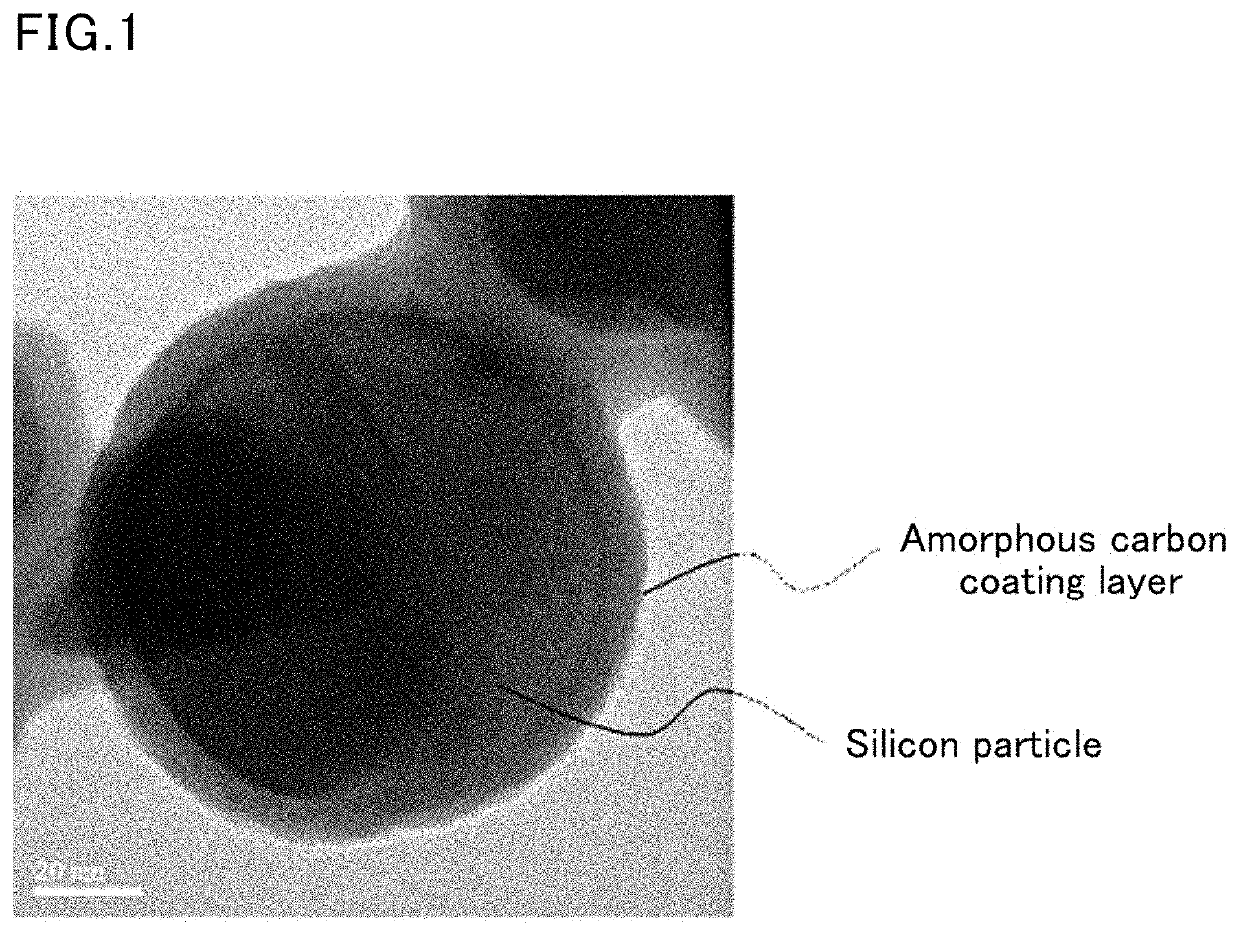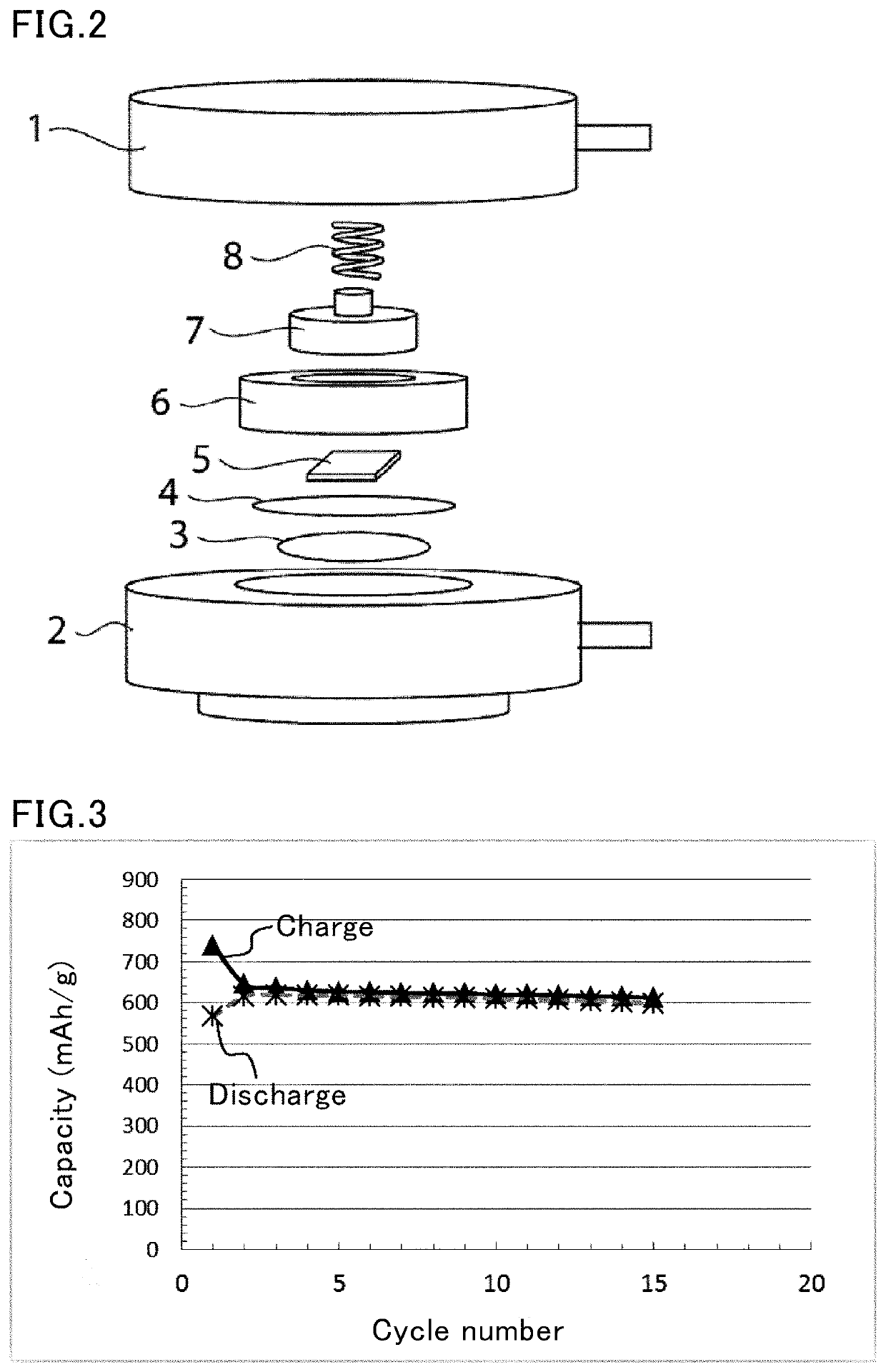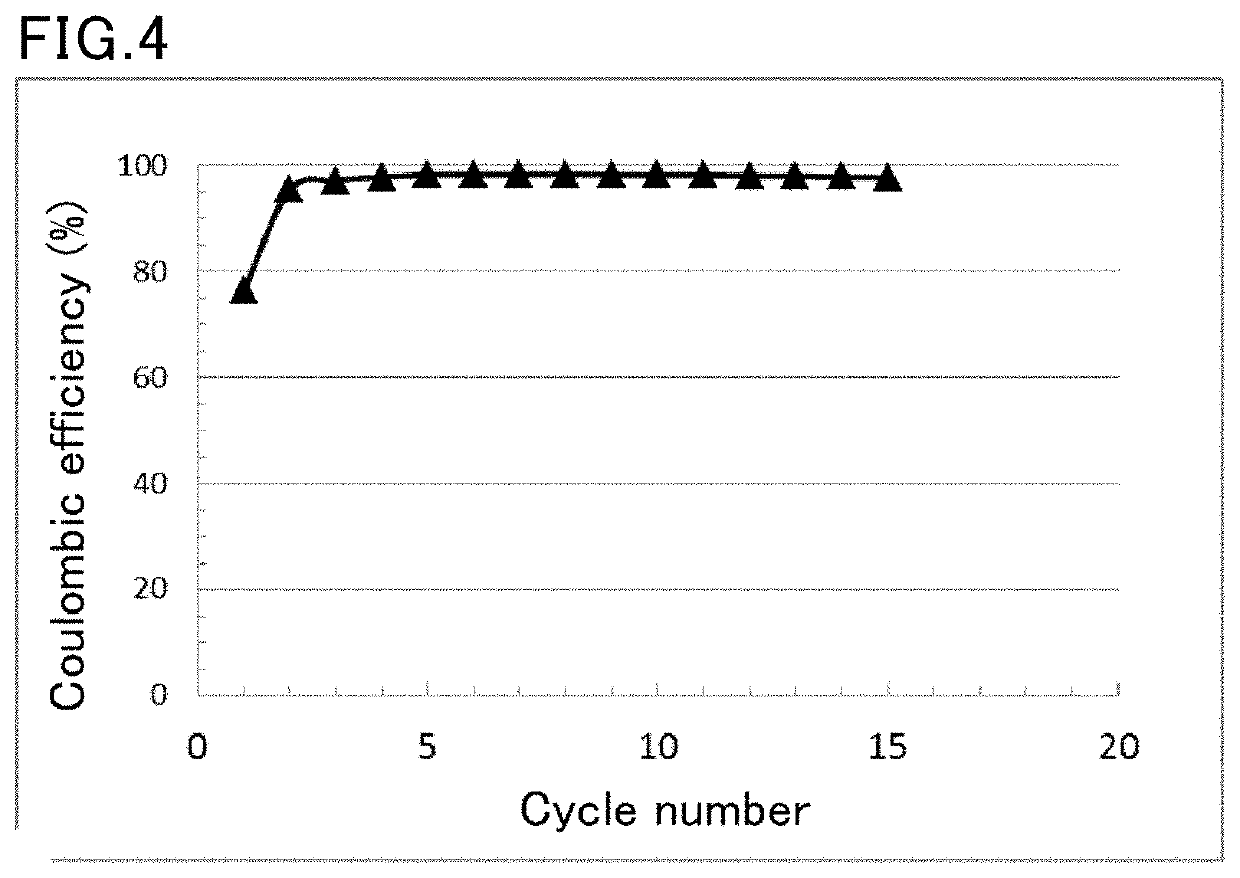Negative electrode active material for lithium ion battery
a lithium ion battery and active material technology, applied in the direction of oxide conductors, non-metal conductors, cell components, etc., can solve the problems of poor battery cycle characteristics, active material breakage, and significant volume expansion and contraction of silicon, and achieve excellent contact and adhesiveness, high suppressing effect on decomposition, and high adhesiveness and followability.
- Summary
- Abstract
- Description
- Claims
- Application Information
AI Technical Summary
Benefits of technology
Problems solved by technology
Method used
Image
Examples
example 1
(Formation of Coating Layer)
[0128]1,5-Dihydroxynaphthalene (hereinafter abbreviated as “1,5-DHN”, available from Tokyo Chemical Industry Co., Ltd.), a 40% aqueous methylamine solution (available from FUJIFILM Wako Pure Chemical Corporation), and a 37% aqueous formaldehyde solution (available from FUJIFILM Wako Pure Chemical Corporation) were used as starting materials. In a flask, 400 mL of a mixed solution of the three materials in ethanol was prepared. The molar ratio of 1,5-DHN, methylamine, and formaldehyde was 1:1:2. The concentration of 1,5-DHN was 0.02 mol / L.
[0129]Subsequently, 6 g of silicon raw material particles (Si particles, available from Sigma-Aldrich, average particle size: 100 nm) were added to the mixed solution in ethanol. The mixed solution was then reacted for five hours while maintaining the temperature of the solution at 50° C. and simultaneously ultrasonicating and stirring the solution. After reaction, the solution was filtrated and the particles were washed ...
example 2
[0137]To a 500-mL flask was added a silicon particle-containing solution containing 6 g of silicon raw material particles (available from Sigma-Aldrich, average particle size: 100 nm) and 160 g of ethanol. The flask was set in an ultrasonic tank held isothermal at 50° C. While simultaneously ultrasonicating and stirring the silicon particle-containing solution, 40 g of a 0.225 mol / L 1,3,5-trimethylhexahydro-1,3,5-triazine (available from Tokyo Chemical Industry Co., Ltd.) solution in ethanol and 40 g of a 0.225 mol / L 1,5-DHN solution in ethanol were simultaneously added to the flask at a rate of 5 g per minute. After addition, the mixture was reacted for additional four hours.
[0138]After reaction, the solution was filtrated and the particles were washed with ethanol three times. The washed particles were dried under vacuum at 110° C. overnight to give silicon particles coated with naphthoxazine resin.
[0139]Subsequently, the coated silicon particles were heated under vacuum at 400° C...
example 3
[0142]To a 500-mL flask was added a silicon particle-containing solution containing 3 g of silicon raw material particles (available from Sigma-Aldrich, average particle size: 100 nm) and 160 g of ethanol. The flask was set in an ultrasonic tank held isothermal at 70° C. While simultaneously ultrasonicating and stirring the silicon particle-containing solution, 40 g of a 0.09 mol / L 1,3,5-trimethylhexahydro-1,3,5-triazine (available from Tokyo Chemical Industry Co., Ltd.) solution in ethanol was added, followed by stirring for 30 minutes. Thereafter, 40 g of a 0.09 mol / L 1,5-DHN solution in ethanol was added to the flask at a rate of 10 g per minute. After addition, the mixture was reacted for additional seven hours.
[0143]After reaction, the solution was filtrated and the particles were washed with ethanol three times. The washed particles were dried under vacuum at 110° C. overnight to give silicon particles coated with naphthoxazine resin. Subsequently, the coated silicon particles...
PUM
| Property | Measurement | Unit |
|---|---|---|
| 2θ | aaaaa | aaaaa |
| 2θ | aaaaa | aaaaa |
| particle size | aaaaa | aaaaa |
Abstract
Description
Claims
Application Information
 Login to view more
Login to view more - R&D Engineer
- R&D Manager
- IP Professional
- Industry Leading Data Capabilities
- Powerful AI technology
- Patent DNA Extraction
Browse by: Latest US Patents, China's latest patents, Technical Efficacy Thesaurus, Application Domain, Technology Topic.
© 2024 PatSnap. All rights reserved.Legal|Privacy policy|Modern Slavery Act Transparency Statement|Sitemap



